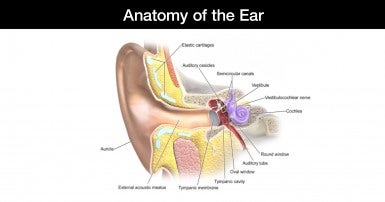 Excessive noise is one of the most common causes of hearing loss and occupationally related hearing loss continues to be a significant problem in Canadian workplaces. Many CUPE members work in occupations that put them at risk of exposure to excessive noise. Particularly vulnerable workers include those that work with heavy machinery, construction or snow removal equipment, maintenance and grounds equipment as well as first responders and transportation workers.
Excessive noise is one of the most common causes of hearing loss and occupationally related hearing loss continues to be a significant problem in Canadian workplaces. Many CUPE members work in occupations that put them at risk of exposure to excessive noise. Particularly vulnerable workers include those that work with heavy machinery, construction or snow removal equipment, maintenance and grounds equipment as well as first responders and transportation workers.
When workers are exposed to loud noises in the workplace they can experience temporary and even permanent hearing loss. Statistics on the total number of Canadians who suffer from occupationally caused hearing loss are nearly impossible to calculate as many worker compensation boards across the country only report time-loss injuries.
Indications that you may have a noise problem in your workplace:
- Noise levels are louder than busy city traffic
- You must raise your voice when talking to someone a few feet away from you
- You must increase the volume of audible devices such as radio, TVs and cellphones following your work shift
If you’re unsure as to whether or not your workplace has a noise issue, contact your health and safety committee and ask that the noise level be tested. Tests are most commonly performed by qualified individuals using a sound level meter, or a noise dosimeter worn by the workers.
How damage takes place
Sound creates an air pressure differential that travels down the ear canal where it strikes the tympanic membrane (your eardrum). From there, the pressure causes the membrane to vibrate which in turn vibrates three small bones known as the ossicles. The membrane and bones act to amplify the signal as it passes into the cochlea. As the vibrations pass through the cochlea, as many as 20,000 different receptors react with the vibrations and send a signal to your brain which you interpret as noise.
Sound waves are measures on a logarithmic scale with units known as decibels (dB). The log scale means that 50 dB is 10 times louder than 40 dB, while 60 dB is 100 times louder. Very loud noise of over 140 dB can do immediate permanent damage, but most occupational hearing loss is caused by noises over 85 dB with longer exposure times.
To get a sense of these levels, normal conversation occurs around 60 dB and most gas lawnmowers are around 90 dB at the distance they are operated.
As the level of the sound increases, the shorter the time until damage takes place. Hearing loss generally affects hearing of the higher frequencies first.
What are safe limits?
| ALLOWABLE LEVEL dB(A) | MAXIMUM PERMITTED DAILY DURATION (HOURS) |
|---|---|
| 85 | 8 |
| 88 | 4 |
| 91 | 2 |
| 94 | 1 |
| 97 | 0.5 |
| 100 | 0.25 |
Table: Example of noise exposure limits when criterioon level is 85 dB(A) with a 3 dB(A) exchang
In order to protect yourself against the effects of noise, it must be understood that the effects of noise are cumulative throughout the day. As the level of sound increases, the exposure limits before damage occurs decrease dramatically. Any worker who is exposed to levels of noise above 85 dB will have a potential risk of damage to their hearing. The higher the noise, the faster damage can be done and the shorter amount of time a worker can be exposed. This decrease in safe exposure time is illustrated in the table. Most jurisdictions use an allowable level of 85 dB, with an exchange rate of 3 dB. The exchange rate is the amount by which the permitted sound level may increase if the exposure time is halved.)
Prevention
Occupational hearing loss is completely preventable. To do so, employers should follow a hierarchy of controls:
Step 1: Remove or substitute. Where feasible, sources of noise should be removed from the workplace, or substituted with a less noisy alternative.
Step 2: Engineering controls. Where removal is not possible, engineering controls that block the noise from reaching the workers should be implemented. This could be done by enclosing equipment, or building separate work areas for workers to control loud machines remotely.
Step 3: Administrative controls. When exposure to loud noise is unavoidable, employers should design tasks so that no one is exposed to the combination of loud noise for extended periods of time that would possibly lead to hearing loss.
Step 4: Personal protective equipment. When used in conjunction with administrative controls, earplugs and earmuffs act to reduce the sound pressure that can reach the inner ear. It is important to review the manufacturer’s specifications on the level of protection to ensure that workers are still not over exposed.
For more information on computing an exposure limit, or setting up a hearing protection program contact your regional health and safety specialist representative.
For more information contact:
CUPE National Health and Safety Branch
1375 St-Laurent Boulevard
OTTAWA, ON K1G OZ7
Tel: (613) 237-1590
Fax: (613) 237-5508
Email: health_safety@cupe.ca

